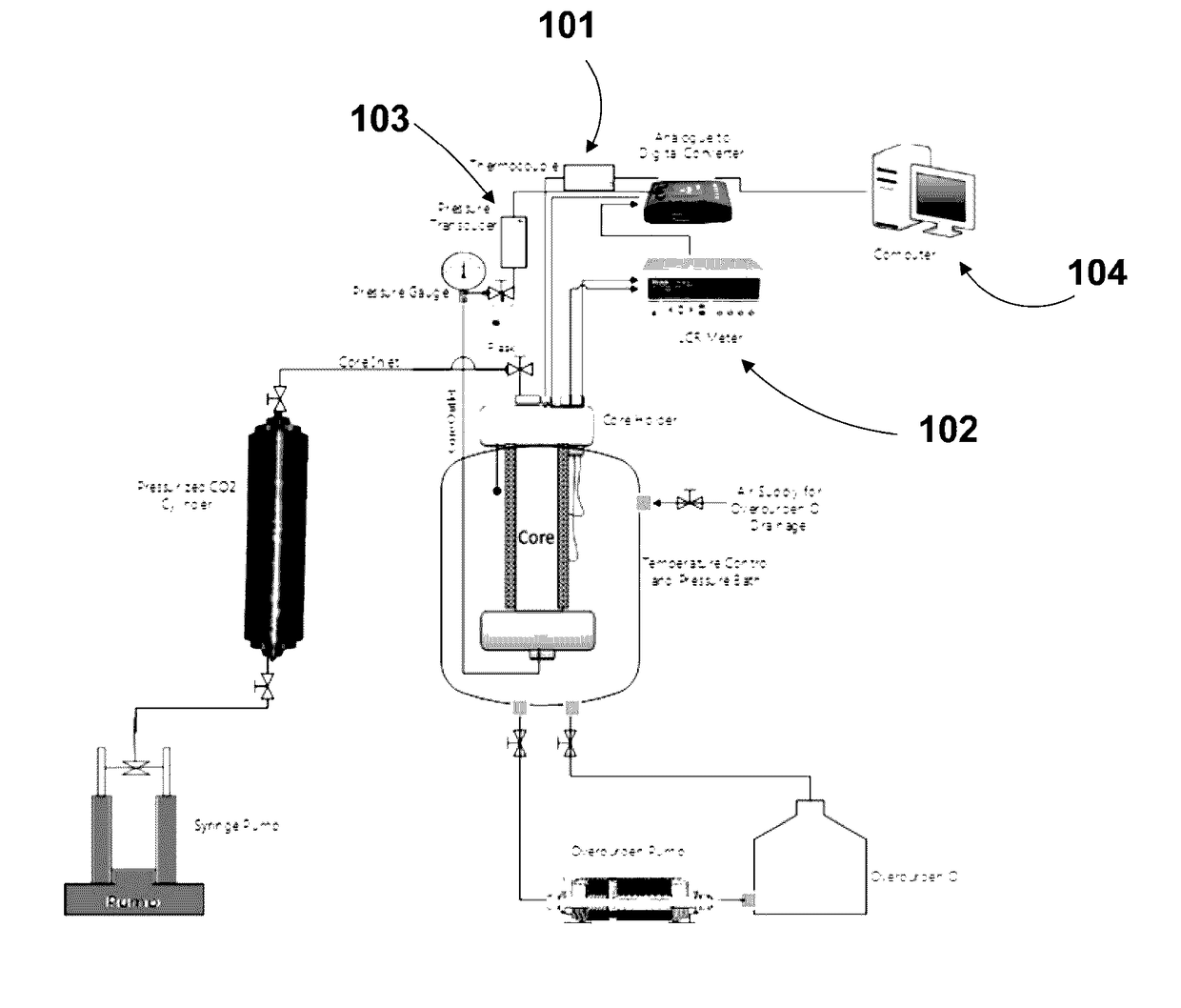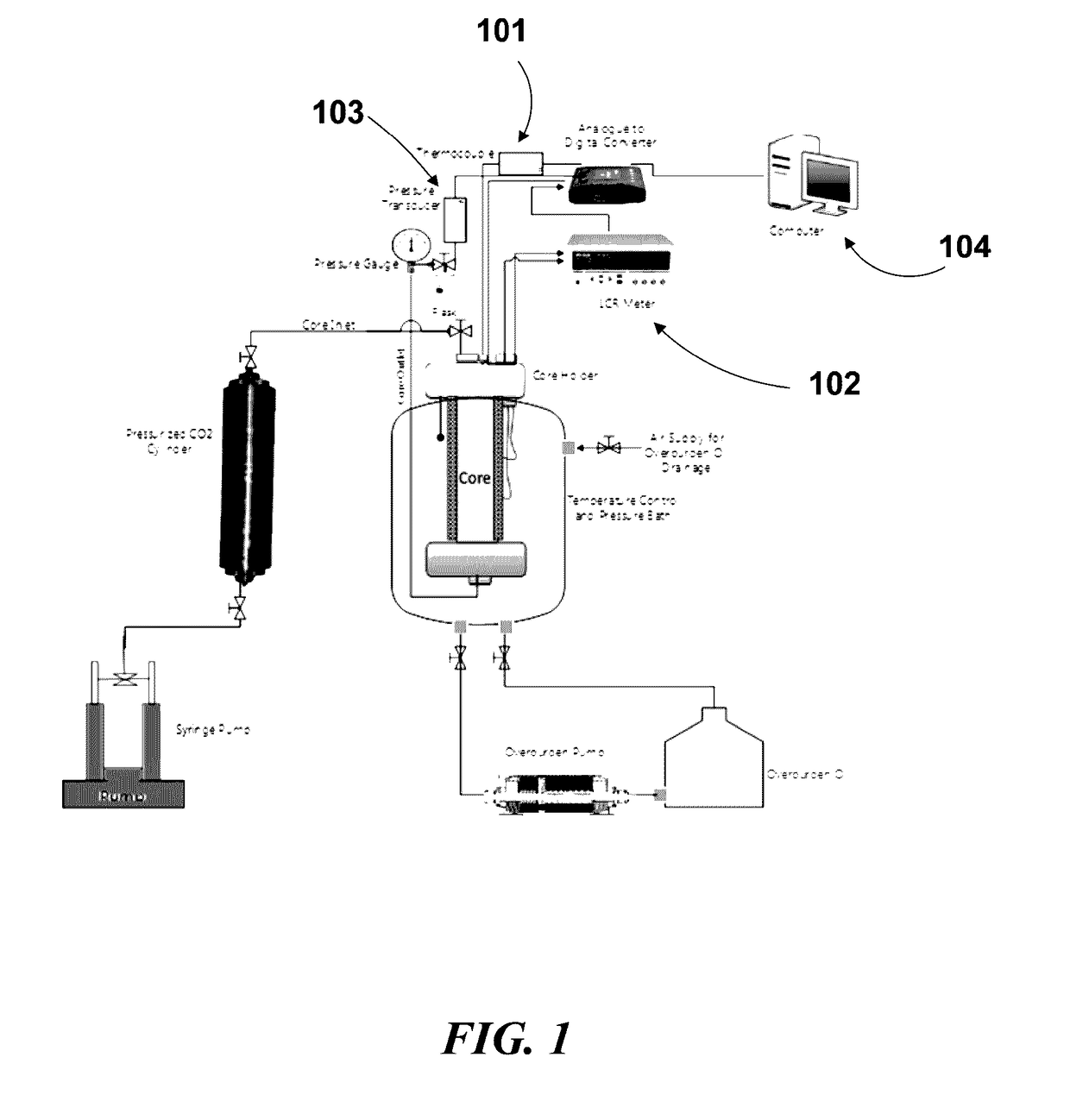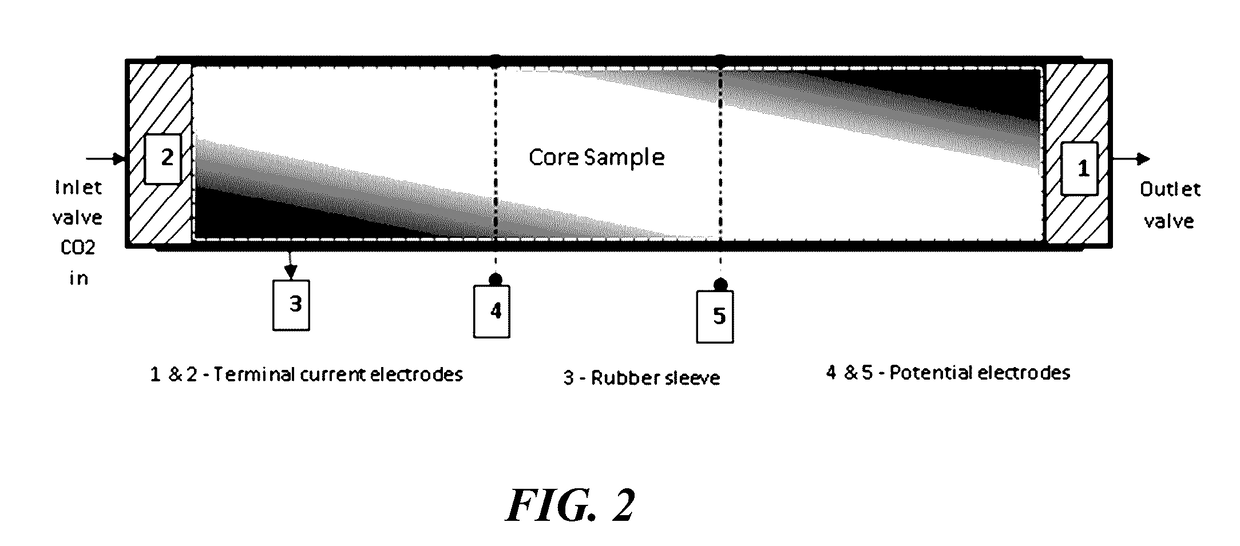Well-bore and reservoir monitoring process by logging temperature and resistivity
a technology of resistivity and temperature, applied in the field of wellbore monitoring process, can solve the problems of high cost, failure to inhibit strategy, and high injectivity and productivity of hammer formation
- Summary
- Abstract
- Description
- Claims
- Application Information
AI Technical Summary
Benefits of technology
Problems solved by technology
Method used
Image
Examples
example 1
Experimental Setup
[0075]Carbonate rock samples were collected from the same rock quarry of Indiana limestone with recorded high level of homogeneity, which is important so as to be able to compare results between samples. Furthermore, Mercury injection capillary pressure (MICP) and NMR analysis in addition to porosity measurements were used to ascertain homogeneity.
[0076]Samples were cut into cylindrical cores and their ends surface grinded to achieve very flat faces necessary for good electrical contact. They were then cleaned with methanol in a soxhlet apparatus to remove all salt deposits from their pores. They were then dried in a vacuum oven after which sample dimensions and properties were measured (Table 1). Synthetic brine with composition and properties in Table 2 was prepared and used to saturate core samples.
TABLE 1Core propertiesBulkHeAirSampleLDVol.PorositypermeabilityID(cm)(cm)(cc)(%)KIL-17.0643.73677.4317.790423IL-27.0343.74177.3718.367324IL-36.8153.73774.7619.458536I...
example 2
Results and Discussion
[0078]Combined logs of resistivity and temperature with time for all samples are shown in FIG. 3-7. It was observed that the resistivity and temperature logs remain fairly constant after CO2 injection until after about 150 hours, when the log deflected to the left. The log prior to deflection was then taken as the baseline log for all the CO2 storage experiments. FIGS. 3A and 3B and FIGS. 4A and 4B show the combined resistivity and temperature logs for CO2 storage in sample IL-1 and IL-2 respectively. The two logs (resistivity and temperature) showed similar trends in both samples tested. Electrical resistivity signature was constant prior to CO2 injection and later increased in response to CO2 influx and remained constant again around this resistivity value until after quite a number of days (4-6 days in both experiments) when the constant resistivity pattern deflected from the baseline to the left suggesting the onset of chemical reactions between the three p...
example 3
Significance and Field Applicability
[0091]1. Long term monitoring of geochemical processes during CO2 sequestration in saline aquifers: The disclosure is applicable for monitoring CO2 saturation distribution as well as mineralization of the injected CO2 in deep saline aquifer of carbonate formation type. The geological formation must also be of closed boundary such that water saturation remains constant during and after injection. This is to ensure that resistivity change is not due to change in water saturation from external source but only due to geochemical processes (rock dissolution and precipitation) as observed in the experimental results. CO2 storage by mineralization (also called scaling or precipitation) is the safest and the long term goal of all sequestration projects. Observation wells drilled (or existing wells converted to observation wells) across a geological formation such as a deep saline aquifer for the purpose of sequestering and monitoring CO2 should be equippe...
PUM
 Login to View More
Login to View More Abstract
Description
Claims
Application Information
 Login to View More
Login to View More - R&D
- Intellectual Property
- Life Sciences
- Materials
- Tech Scout
- Unparalleled Data Quality
- Higher Quality Content
- 60% Fewer Hallucinations
Browse by: Latest US Patents, China's latest patents, Technical Efficacy Thesaurus, Application Domain, Technology Topic, Popular Technical Reports.
© 2025 PatSnap. All rights reserved.Legal|Privacy policy|Modern Slavery Act Transparency Statement|Sitemap|About US| Contact US: help@patsnap.com



